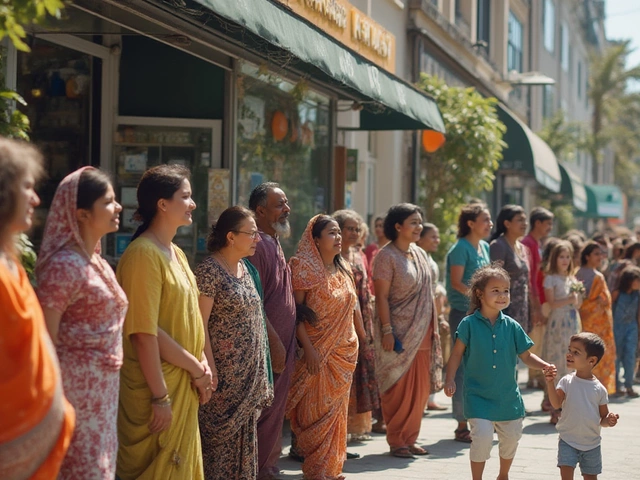There's a lot of buzz about a $900 grocery stimulus for seniors floating around the internet. Ads pop up promising easy cash for groceries just by filling out a quick form. Who wouldn't want nearly a thousand bucks back to cover food? But before you start planning a steak dinner, let's get real about what's actually out there for older adults looking for grocery help.
It's tempting to believe these headlines, especially with everything costing more at the store these days. But not every deal you see on Facebook or email is the real thing. Understanding what support the government and other trusted sources truly offer can help you avoid getting scammed—and actually get the help you need. If you've been confused or just curious, you're in the right spot.
- The Origins of the $900 Grocery Stimulus Rumor
- What Food Help Is Actually Available for Seniors?
- How to Tell Real Offers from Scams
- Tips for Stretching Your Grocery Budget
The Origins of the $900 Grocery Stimulus Rumor
The story about a $900 grocery stimulus for seniors is all over social media, but if you look closer, it just doesn't check out. There’s no official government program—federal or state—that gives seniors a one-time $900 payment specifically for groceries in 2025. So, where did this claim even start?
Most of these rumors popped up on Facebook, TikTok, and in email forwards, often linked to websites that ask for personal info or want you to click endless ads. Scammers and clickbait sites use keywords like grocery stimulus to snag older adults looking for legit help. They play off real worries about grocery prices, which have jumped by over 20% since 2020 according to the USDA.
Some confusion also comes from programs like SNAP (the Supplemental Nutrition Assistance Program) and short-term pandemic relief payments. SNAP does send out monthly food funds, but the average senior benefit is nowhere near $900—it's actually closer to $175 a month. Pandemic-era stimulus checks, like the $1,400 payments in 2021, were also a one-and-done deal, not grocery-specific and not targeted just at seniors.
| Rumor Source | What's Real? |
|---|---|
| Facebook posts about $900 grocery cards | No such government program exists |
| Emails linking to "senior stimulus" websites | Often scams or ad farms |
| Confusion with SNAP or past stimulus checks | Real programs, but not $900 and rarely lump-sum |
It’s easy to see how these stories grab attention, especially with rising costs hitting older adults hard. But the truth is, if you spot an ad or get an email claiming you’ll get a $900 grocery stimulus just for being a senior, you’re looking at a rumor—or worse, a scam.
What Food Help Is Actually Available for Seniors?
Forget the viral posts about the $900 windfall. The real story is that older adults in the U.S. have a few solid options when it comes to getting help with groceries. It’s not as flashy as a one-time check, but every bit counts—especially if you’re on a fixed income after retirement. Let’s get into the real programs you can actually use right now.
The main food assistance program for seniors is SNAP (Supplemental Nutrition Assistance Program), also called food stamps. It’s run by every state and helps low-income folks buy groceries using an EBT card, kind of like a debit card for food. The average SNAP benefit for older adults in early 2025 is about $195 per month per person, but the actual amount depends on your household size, income, and expenses.
| Program | Who Qualifies | What You Get |
|---|---|---|
| SNAP (Food Stamps) | Low-income seniors (age 60+ or disabled) | Monthly grocery funds on EBT card ($30 - $250+) |
| Meals on Wheels | Seniors who are mostly homebound | Free or subsidized daily meals delivered |
| Senior Farmers' Market Nutrition Program | Seniors (60+) with limited income | Vouchers for fresh produce at markets |
| Commodity Supplemental Food Program (CSFP) | Seniors age 60+ (income qualified) | Monthly box of basic groceries |
Besides SNAP, Meals on Wheels delivers cooked meals right to your door if you have trouble getting out. The program is mostly for folks who are homebound or have a hard time preparing meals, and it’s usually free or based on what you can afford.
The Senior Farmers’ Market Nutrition Program gives eligible seniors coupons to use at local farmers’ markets for fresh fruit, veggies, and sometimes honey. It’s a nice way to grab healthier options you might skip at the regular store. Not every state runs this program, but you can check with your local Area Agency on Aging.
There’s also the Commodity Supplemental Food Program (CSFP), available in most states. It gives out monthly boxes with things like canned fruit, cheese, pasta, cereal, and shelf-stable milk. It’s not fancy, but it helps fill the pantry.
Here’s the catch: none of these are called a grocery stimulus and you won’t see a single $900 check. You usually need to apply—either online, by phone, or in person—and there can be some paperwork. Local nonprofits and food pantries can sometimes offer food in emergencies, no questions asked, but those are usually short-term fixes.
If you want help applying for any of these, your best bet is the local Area Agency on Aging. You can find them in every county, and they’re there to help you figure out which programs you qualify for. You can also call 1-800-677-1116 to connect with eldercare resources in your area.

How to Tell Real Offers from Scams
It feels like almost every week another ad or email claims seniors can get free money for groceries, but most of these are scams. The truth: there’s no official $900 grocery stimulus for seniors coming from the federal government as of May 2025. Both the Federal Trade Commission (FTC) and AARP have warned that scammers use this kind of story to trick people into giving up personal information or even money.
If someone asks you to pay a fee or give your Social Security number, bank info, or Medicare details just for a grocery benefit, that’s a huge red flag. Real government programs, like SNAP or food pantries, never make you pay up front or ask you to share this kind of sensitive info online or over the phone.
When you’re not sure if something is legit, check the actual government websites (like benefits.gov or usa.gov). Don’t trust random phone calls or emails, and avoid clicking on links from unknown sources. Here’s a quick checklist to help you spot a scam versus the real deal:
- If the offer sounds too good to be true ("free $900 just for seniors!") — it probably is.
- Real programs don't ask for payment or gift cards to "get started."
- Scammers often pressure you to act now. Genuine benefits have clear application windows and details you can check on official sites.
- Look for official sources — .gov websites or well-known local organizations.
- Double-check the contact information. Real agencies list phone numbers and addresses you can verify separately.
Here’s how common scams compare to legit offers:
| Fake Offers | Legit Government Programs |
|---|---|
| Promise large sums instantly ("$900 for groceries!") | Give clear details about eligibility and benefits, usually smaller amounts |
| Ask for Social Security, banking info, or payment | Never ask for payment; personal info collected through secure, official channels |
| Poor spelling, urgent language, or pressure tactics | Professional communication, reasonable timelines |
| Strange web addresses; unknown sender | Official .gov or recognized nonprofit websites |
If you think you’ve been targeted by a scam, you can report it to the FTC at reportfraud.ftc.gov or call your local Area Agency on Aging for help. No one wants to get tricked when they’re just looking for some grocery relief, so arm yourself with the facts before you share your info with anyone.
Tips for Stretching Your Grocery Budget
Nowadays, every dollar matters at the store, especially if you're a senior living on a fixed income. So, what are some real ways to make your grocery money go further? Here are tried-and-true strategies that actually work—no magic required.
- Grocery stimulus offers making big promises? Instead, check out SNAP (food stamps)—some seniors don’t realize they qualify even if they own a home or car. In 2025, the average extra help for seniors on SNAP is around $190 a month, which isn’t chump change. Apply online or ask your local Area Agency on Aging for help.
- Senior discounts are a game changer. Many chain stores like Kroger, Harris Teeter, and ShopRite have special savings days for people 60 and up. Just ask at the customer service desk or check their weekly ads. Don’t leave discounts on the table because you didn’t ask.
- Food pantries aren’t just for emergencies. Many local churches, senior centers, and food banks welcome older adults, offering regular distributions of pantry basics, fresh produce, and dairy. Some even deliver—perfect if getting out is hard.
- Stick to a list. It sounds basic, but it really helps. Planning meals around weekly sales flyers keeps impulse buys in check.
- Go generic. Store brands taste the same most of the time and they can save serious cash over national brands.
- Look for “Senior Farmers’ Market Nutrition Program” vouchers. In most states, adults 60 and up get free coupons for fresh fruits and veggies from local farmers. It supports small farms and keeps your menu healthy.
If you’re not sure if you qualify for any food benefits, call the Eldercare Locator at 1-800-677-1116. It’s a free, government-run service that connects you with local resources. You can also talk to a benefits counselor at your senior center—sometimes they’ll even help fill out forms.
No golden ticket, but with these tools, you can really stretch your budget and skip those scammy offers. Your grocery list—and your wallet—will thank you.






